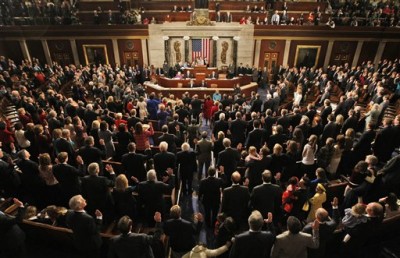What do the House rule changes mean for transportation spending?
 Earlier this week the House adopted rules for this new session of Congress. It’s a bit of inside baseball that can be hard to decipher, but these rules determine how bills are considered by lawmakers and what bills can and cannot do. Streetsblog Capitol Hill covered this issue on Monday and today, but it’s worth a closer examination.
Earlier this week the House adopted rules for this new session of Congress. It’s a bit of inside baseball that can be hard to decipher, but these rules determine how bills are considered by lawmakers and what bills can and cannot do. Streetsblog Capitol Hill covered this issue on Monday and today, but it’s worth a closer examination.
One of the new rules will definitely have two significant impacts on transportation spending.
First, it would subject transportation spending to the annual appropriations process. Basically this means that instead of having transportation funding be more or less automatically tied to spending determined by the six-year transportation law, appropriators in Congress would decide funding levels each year — likely lower than what the transportation bill “authorized” and potentially leaving money unspent in the highway trust fund each year.
Since 1998 during the last two transportation laws (SAFETEA-LU and TEA-21), appropriators have been required by House rules to fund overall transportation programs at the aggregate levels written into the authorization, like current law SAFETEA-LU. This change will allow congressional appropriators to fund transportation below funding levels authorized in the transportation law or even below gas tax receipts.
While the new rule won’t actually allow diversions of transportation dollars to non-transportation uses as some highway advocacy groups claimed last week, it nevertheless poses some significant issues. It would have an impact on the economy and on local projects that rely on the certainty of guaranteed funding to bid out contracts and build projects. It could create even more uncertainty than we already have with the continued stopgap extensions.
There’s no doubt that the highway trust fund isn’t covering what we need to spend as general funds have been used to shore up the trust fund in the past few years. But cutting transportation spending even further won’t solve the real problems, namely that the money — whether it’s more or less than before — is too often given out to states with no strings attached and no accountability for what that money should accomplish.
We need a better program that spends money wisely to meet the needs we have in 2010, not just a cheaper one.
Second, the new rule would prohibit the Appropriations Committee from funding any program not specifically authorized in law. This means that innovative programs that were created outside the six-year transportation authorization like TIGER or the Bush Administration’s Urban Partnership Program wouldn’t receive funding from the trust fund because they were new programs not included in the transportation authorization. (The UP program was the source of funding for congestion pricing in New York, before that project fell apart locally.)
In the last 8 years, both Republican and Democratic presidents have developed creative programs like these to better address our nation’s transportation needs. If this rule had been in place these two programs would not have been funded and projects like the Norfolk-Southern’s Crescent Corridor and Minneapolis’s I-35 multimodal corridor improvements among others could not have moved forward.




















Pingback: House of Horrors: GOP to Put Transportation on the Chopping Block? | Mobilizing the Region
Pingback: APTA on how to save 10K: use public transit « Crossroads